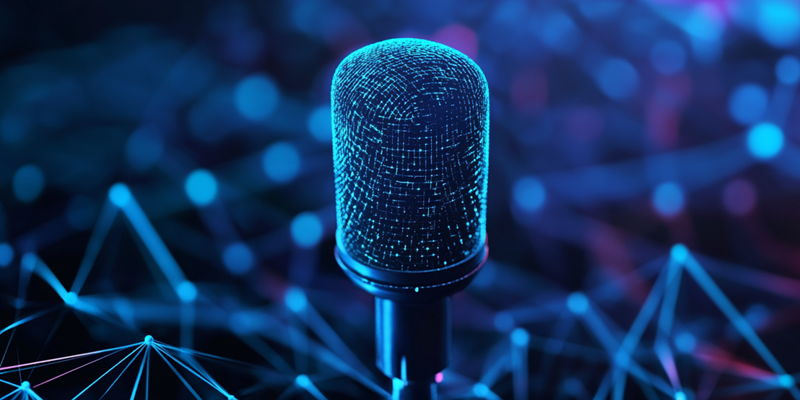In a world increasingly dominated by multifunctional smartphones and wearable devices, the Plaud NotePin emerges as a niche yet intriguing contender—a standalone AI-powered voice recorder. The device has generated significant interest due to its ability to transcribe, summarize, and extract key information from audio recordings efficiently. However, as cutting-edge AI functionalities become embedded in everyday gadgets from tech behemoths such as Apple and Google, the necessity of a dedicated device like the NotePin invites scrutiny.
Key Features of Plaud NotePin
Accurate Transcriptions and Comprehensive Summaries
One of the standout features of Plaud NotePin is its impressive accuracy in transcriptions. It offers users a reliable means to transform spoken words into text, making it an invaluable tool for professionals needing precise recordings, such as journalists, researchers, and attorneys. The NotePin doesn’t just stop at transcriptions; it also provides comprehensive summaries, distilling hours of content into digestible points. These capabilities make it efficient for users who need to sift through large volumes of information quickly.
However, a notable limitation arises from the requirement that recordings must be manually imported and processed within the Plaud app. This additional step demands extra time and effort from users, contrasting sharply with the seamless integration offered by AI functionalities in smartphones. For instance, users of the NotePin cannot sync their transcriptions with other applications, leaving them with isolated text files rather than actionable items. This lack of interoperability within broader digital ecosystems can be frustrating for users already accustomed to the cohesive integration of services in smartphone apps.
Hardware Design and User Convenience
The Plaud NotePin’s hardware design offers certain conveniences, such as the inclusion of lanyards and wristbands that make the device easy to carry around. The portability of NotePin ensures it can be readily accessible during interviews, meetings, or field research, providing users with a practical option for various recording needs. Its simplicity of use, with intuitive buttons and a straightforward interface, makes it user-friendly even for individuals not remarkably tech-savvy.
Yet, the NotePin’s hardware charm is not enough to overshadow the growing availability of equivalent AI functions already embedded in modern smartphones. Apple’s iOS 18 and macOS Sequoia, for instance, come packed with transcription and summarization capabilities within their built-in Voice Memos app. Similarly, Google’s Pixel Recorder offers an array of sophisticated features that rival, if not surpass, those of NotePin. This increasing ubiquity of AI-enabled voice recording features in smartphones highlights a significant challenge for standalone devices, which can struggle to justify their existence amid all-in-one gadgets that consumers carry daily.
Broader Industry Trends and Market Viability
Shift Toward Integrated Digital Ecosystems
The consensus within the tech industry suggests that while the NotePin is both effective and user-friendly, its long-term viability appears questionable due to the rapid integration of similar AI capabilities in smartphones and wearable devices. Industry leaders like Apple and Google have continually advanced the AI functionalities within their products, thus setting high expectations for seamless and multifunctional user experiences. In this evolving landscape, standalone devices such as the NotePin face a daunting challenge—offering enough unique value to merit their niche role.
As AI technology progresses, the convenience of having advanced functionalities within a single device, like a smartphone, becomes increasingly desirable. Consumers now prefer gadgets that offer multiple features and can integrate effortlessly into their existing digital ecosystems. The expectation for interconnectedness means that isolated devices must demonstrate extraordinary advantages to gain consumer attention. For NotePin, the lack of integration with other digital tools and platforms represents a glaring weakness in a market skewed towards interoperability and multifunctionality.
Future of AI-Powered Voice Recording Technology
In today’s tech-driven world increasingly filled with multifunctional smartphones and wearable gadgets, the Plaud NotePin stands out as an interesting, albeit niche, contender. This standalone voice recorder, powered by advanced AI, is priced at $169 and has captured attention for its specialized features. The NotePin can transcribe, summarize, and extract crucial information from audio recordings with impressive efficiency. Despite these capabilities, its place in the market raises questions. As tech giants like Apple and Google continue to integrate cutting-edge AI functionalities into their wide array of products, the necessity and appeal of a dedicated device like the NotePin come under closer examination. Notably, these tech giants are embedding similar AI features seamlessly within their existing ecosystems, making multifunctional devices more appealing. The NotePin’s allure might lie in its focused specialization and simplicity, but its future remains uncertain amid an ever-evolving tech landscape dominated by multi-use gadgets. Whether this dedicated recorder will carve out a sustainable niche or be overshadowed by more versatile devices is still up in the air.

